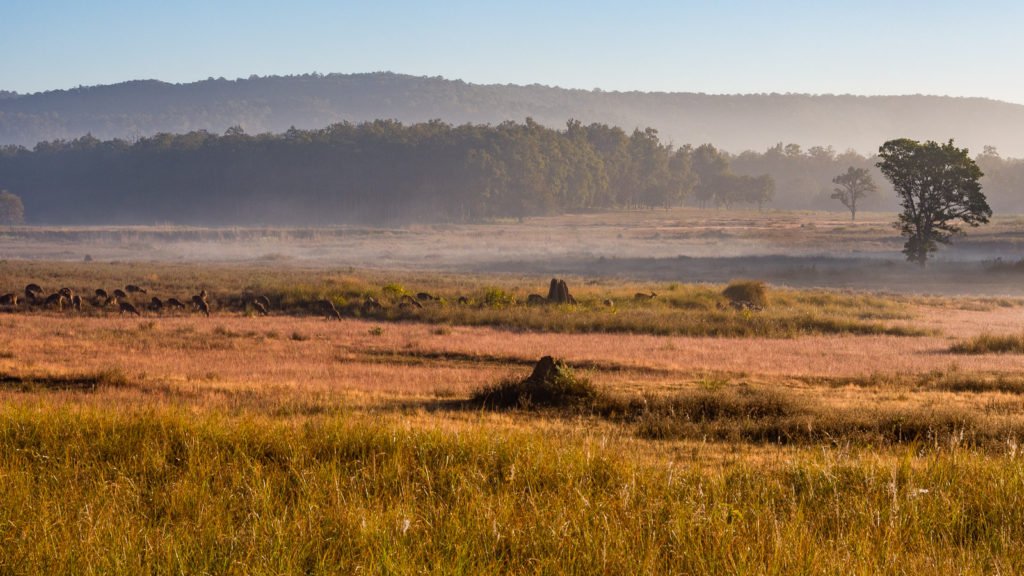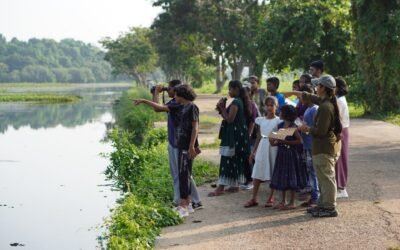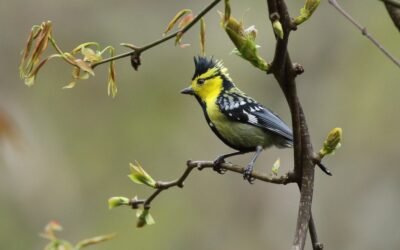Bird Count India recently gave a presentation about Birdwatching and Bird Monitoring for an audience primarily consisting of Forest Department representatives and Naturalists/Guides at Kanha Tiger Reserve in Madhya Pradesh.
The presentation, delivered by Mike Prince, talked about the whys and hows of birdwatching and discussed the impact that documentation through eBird has had. It highlighted many interesting findings about birds in India, but probably stressed more how little we actually know about lots of our common birds, and how everyone can contribute to filling these gaps in our collective knowledge. What was very reassuring to note was the number of already active eBirders amongst the local naturalists. It’s also worth noting that, whilst using a notebook is almost impossible on a jeep safari, the eBird mobile app was a great success: see one of the checklists from earlier in the day!
It was great to see active participation from the Field Director, Mr Sanjay Shukla, who shared some exciting ideas for the future. In particular he noted that, whilst mammals in Kanha are surveyed regularly and in detail, birds have been relatively neglected. He is keen to set up an extensive bird survey across the entire reserve. The logistics for this will be examined shortly, and we hope to announce dates for the first survey. Volunteer participation will be required, so watch this space (and join the Bird Count India mailing list) if you might be interested.






A big issue in protected reserves is that one is not allowed to get off a vehicle. Birding from a jeep (even open) , does not allow good views of birds. Vibrations and vehicle movement make it difficult to use binoculars.
My personal experience is that it is better to bird outside/around a national park than inside.
If you can get a jeep full of birders and not be intent on chasing animals, it is surprising how much you can see if you are patient and stop frequently. But yes, often areas outside the park boundaries are as rich for birds, and easier to view.
Any survey done in conjunction with the Forest Department though would include birding on foot in areas where this is not normally allowed. So this would be an exciting as well as very rewarding exercise.
Hi Mike I was there for the workshop you held at Kanha. Just wanted to know if there was a possibility for me to join the Kanha Bird Estimation/count in May this year.
Kanak
Hello Sir, the Kanha bird count is in March (17-20), not May. Participants are being selected by the Kanha Forest Department — perhaps you could contact them? Thanks.
It is difficult, even when all in the jeep are birders and have specifically noted that birding is a top priority, to get guides/drivers to put the large mammals aside. They are, understandably, very eager to get the clients as good views as possible of the mammals but as birding continues its impressive expansion in India maybe attitudes will change.
Hello,
My visits to national parks and sanctuaries have been mainly for birds specifically, raptors although the larger mammals do hold a certain fascination for me just as they do with rest of you. I have seen that there are forest guides and drivers who do show a keen interest in birds especially, when you tell them or even better, show them some interesting behaviour of a particular bird. It registers with them and this knowledge they happily part to other visitors. I actually specify prior to my visit that I intend on spending considerable time on birding and most times one does get a park guide who has good knowledge of birds. Admittedly, it is difficult to convince a gypsy-load of visitors ignore the the sleeping tiger and look for birds in a place like tiger-centric Ranthamore and it is these reserves that should focus on birds and animals other than the tiger, leopard and the sloth bear. Foot safaris or ‘pag dandi’ is a very good idea to introduce birdwatching, and if the forest department can allocate funds for purchase of binoculars for their field staff I believe it can make a world of difference. The field staff have fully clued up on tiger movements but if we channel that enthusiasm for birds we will be able to see and record much more information. I am happy to know the keen interest shown by the Kanha Field Director in eBird’s efforts. Cheers!
Wow great to hear that.
Hi, Its a nice initiative of Birdcount India which has been taken in true spirit and positively by the FD Sir. I will like to share you earlier to this, starting from year 2011 till 2015 the Panna Tiger Reserve has also undertook Vulture estimation surveys throughout its periphery where one was allowed to stay inside the forest areas and do the bird survey on foot (of course in the company of the local forester). I had been part of 03 such surveys that happened in PTR, its was a good learning experience. Now that at Kanha, its been organised and not only vulture, the survey will be done for the whole Avifauna, is something I am looking forward to, its will be a great experience.
Looking forward to this survey.
Thanks,
Ajay Gadikar
Please provide link to register & participate.l
Please provide online link for registration.
Please provide online link for registration
The photograph of kanha meadows in which you mentioned “swamp deer”, please correct it, in Kanha only Hardground barasingha are found.
Thanks Tarkik. We have made the correction.